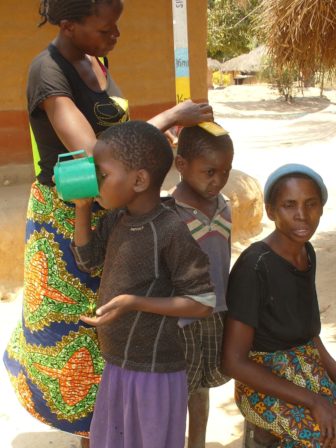Nov 10, 2014
By: Warren Lancaster, Senior Vice President
I just returned from a visit to northern Zambia to monitor the third and final round of the distribution of Zithromax, the drug provided at no cost by Pfizer against trachoma, to the entire population of Nchelenge and Chienge Districts. The district health authorities, rural health centers, and especially the community distributors were very motivated, and ‘up for the challenge’ to reach over 95% of the population, even though the minimum acceptable treatment coverage is 80%. Today as I write I have just heard they reached an incredible 98% and 99%!
The medicine was delivered door-to-door by a team of three trained community health workers, who administered the correct dose of tablets for adults or liquid for young children. We returned to some homes twice in the day and occasionally three times to make sure every person registered through the pre-distribution census received their treatment.
It was interesting to observe how the program has evolved over time. When we began three years ago, parents had to be persuaded that taking the drug once per year for three years was good for them and their children. They were taught the basics of the disease, its transmission, symptoms, and disabling effects and how to minimize the risks of infection through keeping children’s faces clean and their environment open defecation free.
This year it was noticeable that when communities were alerted to the campaign by radio broadcasts, they were ready for the distribution and were able to tell me the causes and consequences of the disease. One thing that you see in areas of trachoma infection is flies around the eyes and noses of children. This was noticeably absent – one of the signs of the success of the program.
This was a great three days enjoyed in villages where people appreciated and understood that this disease could be eliminated from their community. It shows what can be achieved by dedicated and motivated local people resourced and organized to contribute to healthy communities. When Sir John Wilson the founder of Sight Savers visited the area in the early 1960s he noted this was called the Valley of the Blind. As a development practitioner it is very rewarding to have worked alongside a community to change this stigma.


